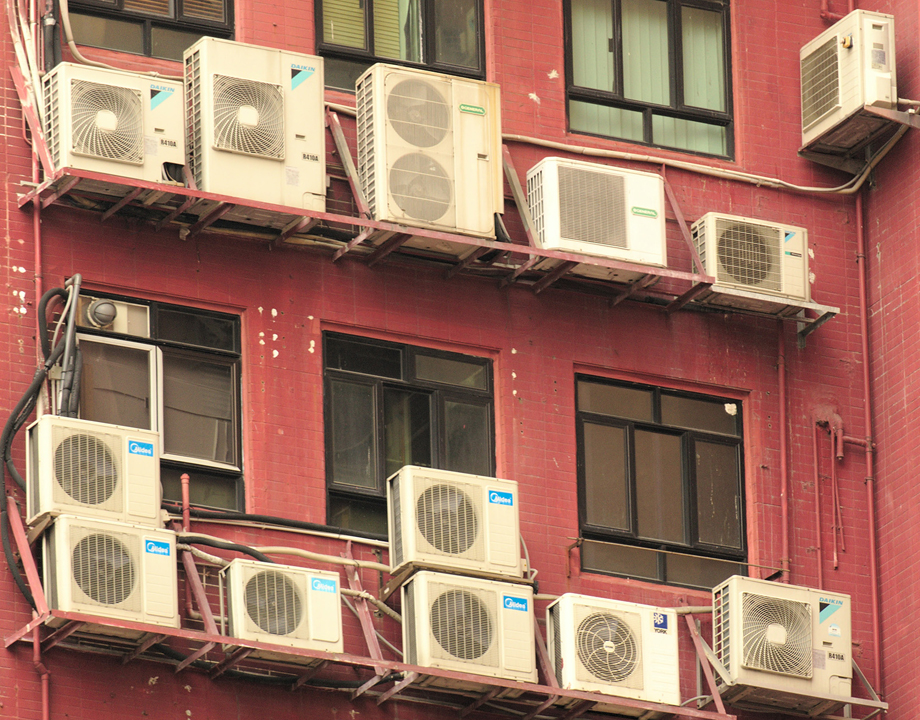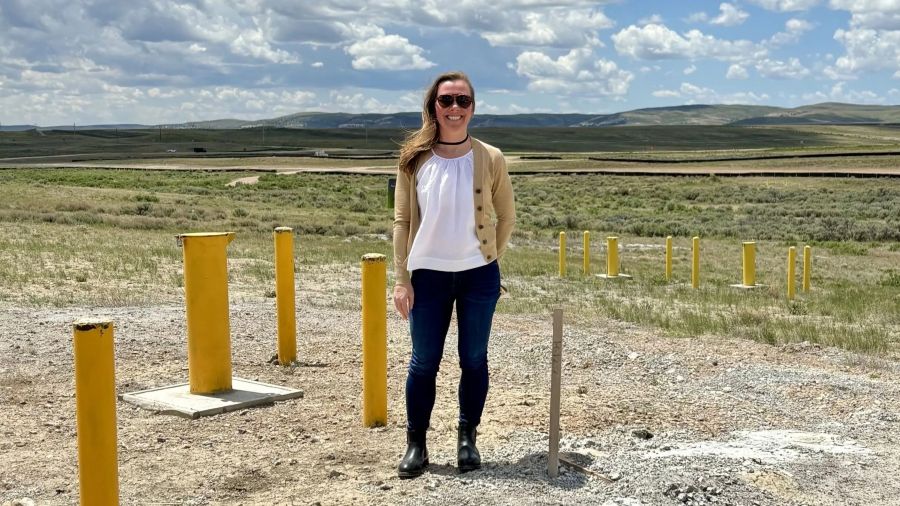Talking Devices Could Reduce Odds of Electrical Grid Breakdowns
Talking Devices Could Reduce Odds of Electrical Grid Breakdowns


If devices such as in-home air conditioners can communicate with one another and take turns powering themselves on during peak demand, they can help prevent serious damage to electrical grids.
When California suffered through multiple heat waves in summer 2022, government and utility officials worried about usage spikes damaging transformers and related infrastructure. To ease the strain, residents received the equivalent of an amber alert from the state, asking them to refrain from overloading the electric grid as much as possible. In less than 30 minutes after 27 million Californians received the text, demand decreased by 2,000 megawatts.
The strategy worked, but it’s not reliable, argued Kevin Kircher, assistant professor of mechanical engineering at Purdue University. The “cash for sweat” model, where consumers make some dollars by letting themselves sweat a bit, or a collective action for the common good, can’t always be relied on, Kircher said.
Instead, a system where machines communicate with each other and “automatically coordinate electrical loads in the background, in a way that’s unobtrusive for consumers and manages infrastructure impacts” is more sustainable, he explained.
“Even relatively short-term spikes in electrical demand can degrade transformer components. Mitigating peaks protects equipment so utilities don’t have to replace expensive equipment [more frequently] and pass the expenditure on to consumers,” Kircher said.
You Might Also Enjoy: How Food Webs May Improve Electric Grids
To decrease the chances of a spike, Kircher suggested that devices such as air-conditioning units could share an “urgency score” that indicates how urgently they need to be switched on. A home that is at a comfortable temperature can wait a minute or two, while others that are more in need of cooling take turns switching on until reaching a certain preset limit. A minute or two after this operation, the cycle can repeat itself.
Since many modern devices already have internet connectivity, they could piggyback on existing connections to communicate with each other and relay messages through the cloud, Kircher suggested. Another possibility is a localized network that uses a different portion of the electromagnetic spectrum to enable communication between devices within a small region such as a house. The refrigerator could talk to the water heater in this way, for example. Manufacturers could be asked to make small modifications to existing systems’ control logic that would facilitate such communication.
The strategy holds promise even within a single home, especially as more consumer households are moving toward complete electrification. However, “we start bumping against the capacity of the electrical service,” Kircher said, which could push consumers to upgrade to expanded electrical service, which could take several months and steep fees to institute. “If you can avoid that by coordinating loads within a home or a business, that’s a very clear value proposition,” he said.
Become A Member: How to Join ASME
Another aspect of the equation comes into play when air-conditioning units or other devices in an entire neighborhood feed into an area transformer and talk to one another to avoid spikes. This would mean coordinating more devices, but more would also be at stake: equipment that costs tens of thousands of dollars to replace, Kircher added.
The scope of the research extends beyond air conditioners. “It really applies to any load that switches on and off periodically in order to keep some measurement [temperature, pressure, humidity, etc.] near a user-specified setpoint,” Kircher said.
Similar Reading: 5 Questions on How to Power Smart IoT Devices
The move toward decarbonization could well lead to increased demand for electricity during peak winter days as well, Kircher noted.
“As we electrify more and more, we may find that this problem of peak demand jeopardizing infrastructure gets worse and worse,” Kircher said. “If we can get ahead of those challenges, we could save money and hassle.”
Poornima Apte is technology writer based in Walpole, Mass.
The strategy worked, but it’s not reliable, argued Kevin Kircher, assistant professor of mechanical engineering at Purdue University. The “cash for sweat” model, where consumers make some dollars by letting themselves sweat a bit, or a collective action for the common good, can’t always be relied on, Kircher said.
Instead, a system where machines communicate with each other and “automatically coordinate electrical loads in the background, in a way that’s unobtrusive for consumers and manages infrastructure impacts” is more sustainable, he explained.
Reducing grid loads
Climate change is leading to increased demand for summer air conditioning, but spikes in electric load, when many units switch on at the same time, can damage wires and transformers. The sudden upsurge increases the amount of current that flows through conductors and transformers. Resulting thermal losses tend to accumulate heat within equipment and increase failure risk.“Even relatively short-term spikes in electrical demand can degrade transformer components. Mitigating peaks protects equipment so utilities don’t have to replace expensive equipment [more frequently] and pass the expenditure on to consumers,” Kircher said.
You Might Also Enjoy: How Food Webs May Improve Electric Grids
To decrease the chances of a spike, Kircher suggested that devices such as air-conditioning units could share an “urgency score” that indicates how urgently they need to be switched on. A home that is at a comfortable temperature can wait a minute or two, while others that are more in need of cooling take turns switching on until reaching a certain preset limit. A minute or two after this operation, the cycle can repeat itself.
Since many modern devices already have internet connectivity, they could piggyback on existing connections to communicate with each other and relay messages through the cloud, Kircher suggested. Another possibility is a localized network that uses a different portion of the electromagnetic spectrum to enable communication between devices within a small region such as a house. The refrigerator could talk to the water heater in this way, for example. Manufacturers could be asked to make small modifications to existing systems’ control logic that would facilitate such communication.
Geographical range
The odds of a large percentage of devices all coming on at the same time over a wide geographical area, like a city, are low. “The problem solves itself if you [make the geographical area] big enough, but the spikes are a problem at smaller scales,” Kircher said. This means that air-conditioning units within a single building or a small neighborhood are much more likely to benefit from this staggered service approach.The strategy holds promise even within a single home, especially as more consumer households are moving toward complete electrification. However, “we start bumping against the capacity of the electrical service,” Kircher said, which could push consumers to upgrade to expanded electrical service, which could take several months and steep fees to institute. “If you can avoid that by coordinating loads within a home or a business, that’s a very clear value proposition,” he said.
Become A Member: How to Join ASME
Another aspect of the equation comes into play when air-conditioning units or other devices in an entire neighborhood feed into an area transformer and talk to one another to avoid spikes. This would mean coordinating more devices, but more would also be at stake: equipment that costs tens of thousands of dollars to replace, Kircher added.
Looking ahead
While Kircher’s research does not explicitly address who will institute such controls and who benefits, he expects utility companies to be natural candidates to take on such a process because they would be interested in extending transformer life. Equipment manufacturers could also potentially add the feature as another environmentally friendly benefit, making devices that communicate with one other to regulate grid loads. Aggregators of retail customers, who coordinate consumer devices with thousands of other consumers who have signed up for such services to receive a small economic benefit, can also help.The scope of the research extends beyond air conditioners. “It really applies to any load that switches on and off periodically in order to keep some measurement [temperature, pressure, humidity, etc.] near a user-specified setpoint,” Kircher said.
Similar Reading: 5 Questions on How to Power Smart IoT Devices
The move toward decarbonization could well lead to increased demand for electricity during peak winter days as well, Kircher noted.
“As we electrify more and more, we may find that this problem of peak demand jeopardizing infrastructure gets worse and worse,” Kircher said. “If we can get ahead of those challenges, we could save money and hassle.”
Poornima Apte is technology writer based in Walpole, Mass.





